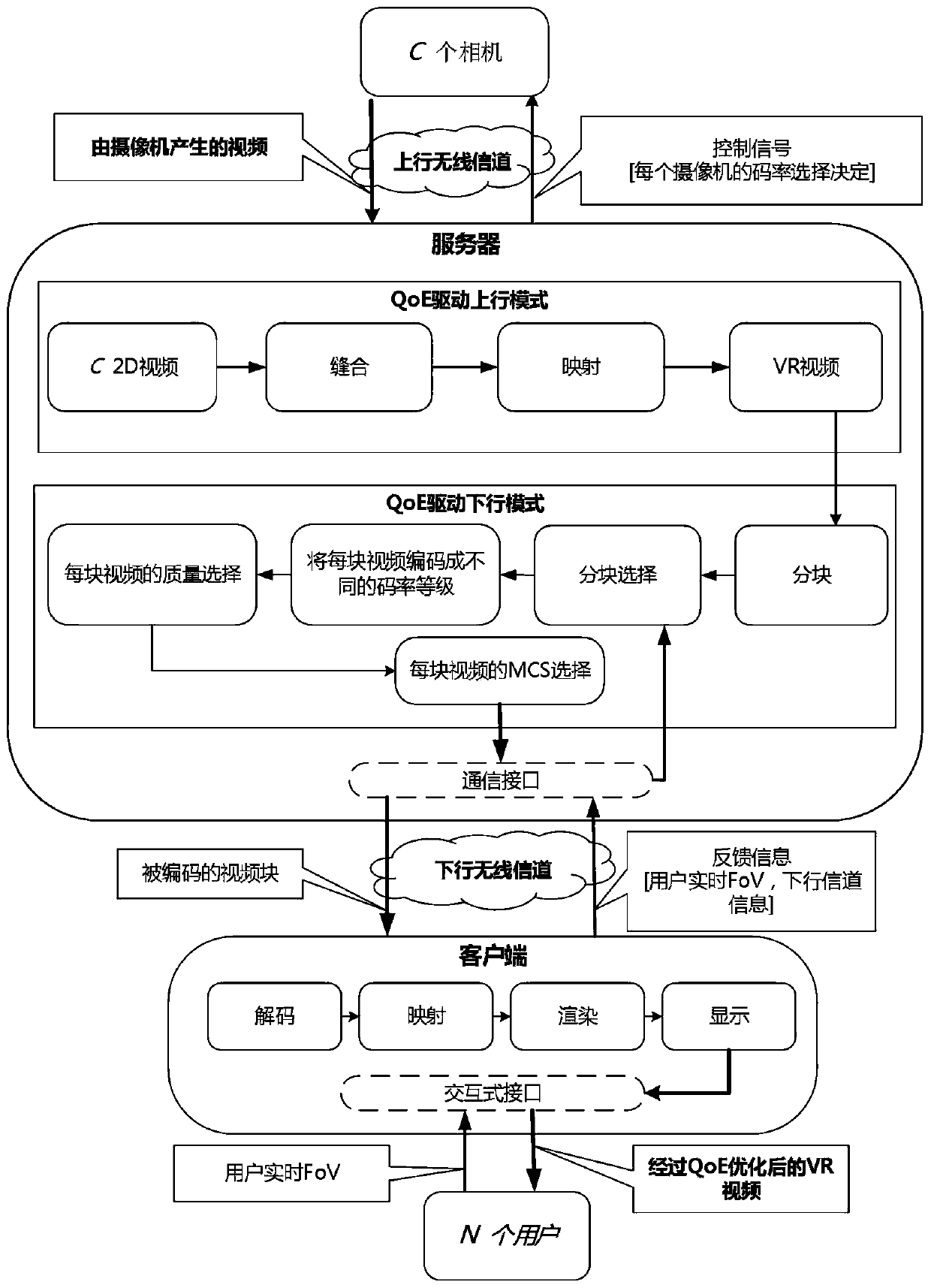QoE-driven VR video self-adaptive acquisition and transmission method
A transmission method and self-adaptive technology, applied in the transmission system, digital video signal modification, electrical components, etc., can solve the problems of not improving the quality of user experience, not considering the importance of QoE, etc.
- Summary
- Abstract
- Description
- Claims
- Application Information
AI Technical Summary
Problems solved by technology
Method used
Image
Examples
Embodiment Construction
[0070] In this embodiment, a QoE-driven VR video adaptive acquisition and transmission method, such as figure 1 As shown, it is applied to a multi-user network scenario, where there are C cameras, VR video servers, and N clients. The camera and the VR video server are transmitted through the uplink, and the VR video server and the user end are transmitted through the downlink; the downlink includes a feedback channel from the user end to the VR video server; the feedback channel can send the user The real-time viewing angle information and downlink bandwidth information are fed back to the server to help the server collect and transmit. Such as figure 2 As shown, the method specifically includes the following steps:
[0071] Step 1. In the application network scenario, C original videos captured by C cameras are denoted as {V 1 ,V 2 ,...,V c ,...,V C}, V c Indicates the original video captured by the c-th camera, 1≤c≤C;
[0072] Then the original video V captured by the...
PUM
 Login to View More
Login to View More Abstract
Description
Claims
Application Information
 Login to View More
Login to View More - R&D
- Intellectual Property
- Life Sciences
- Materials
- Tech Scout
- Unparalleled Data Quality
- Higher Quality Content
- 60% Fewer Hallucinations
Browse by: Latest US Patents, China's latest patents, Technical Efficacy Thesaurus, Application Domain, Technology Topic, Popular Technical Reports.
© 2025 PatSnap. All rights reserved.Legal|Privacy policy|Modern Slavery Act Transparency Statement|Sitemap|About US| Contact US: help@patsnap.com



